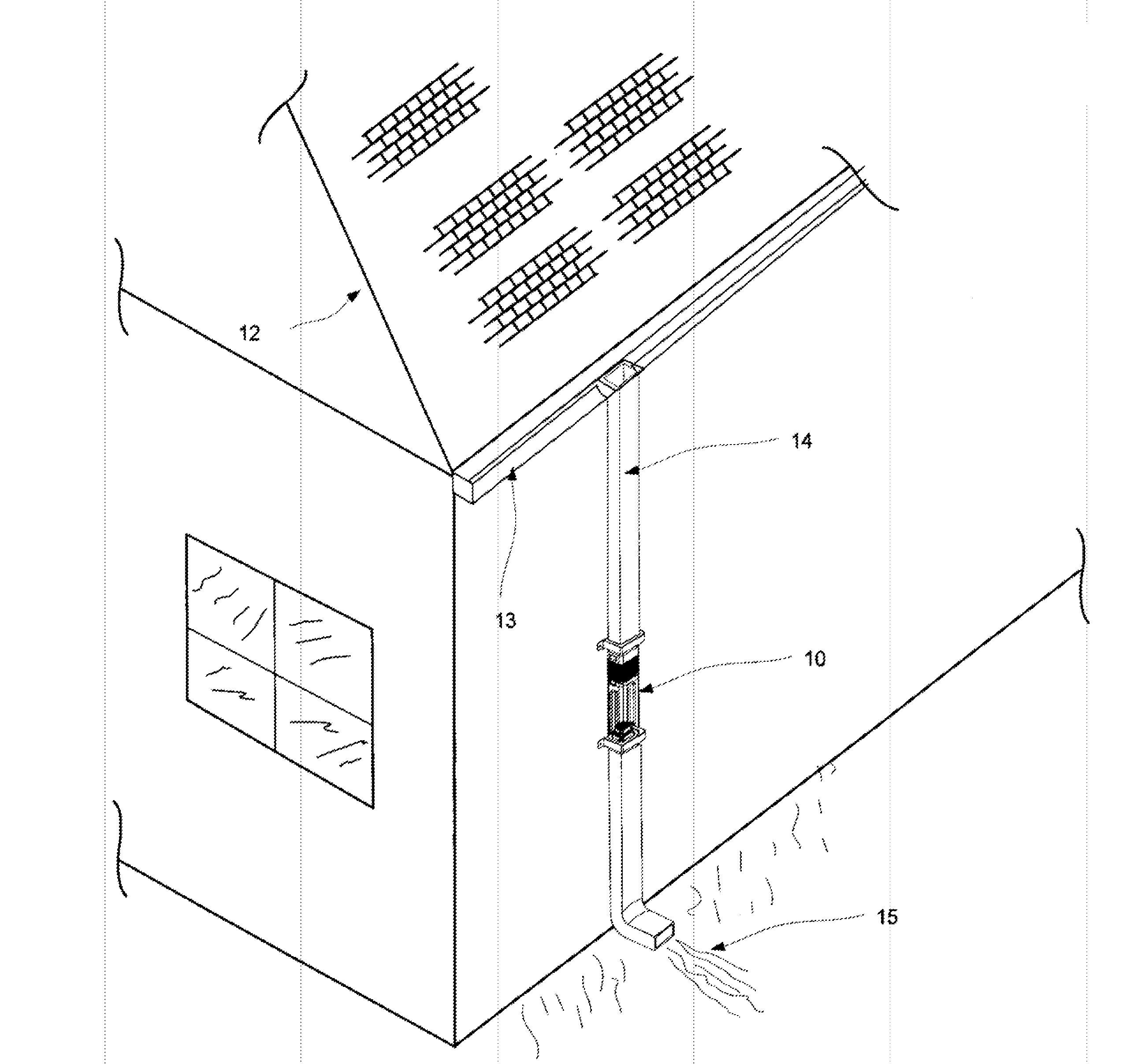Rainwater "real time" flow indicator and debris collection device for gutter downspout
a technology of gutter downspout and flow indicator, which is applied in the direction of roof covering, roofs, constructions, etc., can solve the problems of water entering the gutter, etc., and water entering the siding
- Summary
- Abstract
- Description
- Claims
- Application Information
AI Technical Summary
Benefits of technology
Problems solved by technology
Method used
Image
Examples
Embodiment Construction
[0116]Referring more specifically to the drawings, FIG. 1 and FIG. 2 generally depict the inventive device, The Rain Water Flow Indicator and Debris Collection Device for a Gutter Downspout (hereinafter “the Device”) at 10. It is designed to provide: (i) “real time” monitoring of the flow of rain water through said Device 10, as it courses through the rain water gutter system (hereinafter “the Gutter System”): (ii) early detection of a blockage and advanced warning that the flow of water through the Gutter System has been obstructed, before the Gutter System overflows; (iii) a window of opportunity to remove from the Gutter System, any debris that might be causing or that might cause a blockage, before the Gutter System overflows; (iv) for the removal of debris from rain water as it flows through the downspout 14 and away from the building; and (v) for the installation and use of the Device 10, without great cost or tremendous expertise, irrespective of whether the Gutter System is ...
PUM
 Login to View More
Login to View More Abstract
Description
Claims
Application Information
 Login to View More
Login to View More - R&D
- Intellectual Property
- Life Sciences
- Materials
- Tech Scout
- Unparalleled Data Quality
- Higher Quality Content
- 60% Fewer Hallucinations
Browse by: Latest US Patents, China's latest patents, Technical Efficacy Thesaurus, Application Domain, Technology Topic, Popular Technical Reports.
© 2025 PatSnap. All rights reserved.Legal|Privacy policy|Modern Slavery Act Transparency Statement|Sitemap|About US| Contact US: help@patsnap.com



